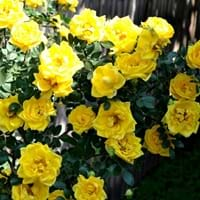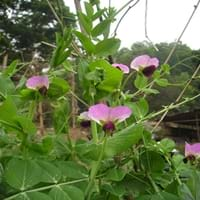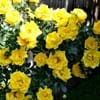Life Span
Perennial
Annual
Type
Perennial
Flowering Plants
Origin
Eastern Europe, Western Asia
Mediterranean
Types
Rosa Harisons Yellow, Rosa Persica
Not Available
Number of Varieties
Not Available
Habitat
gardens, Pastures, Prairies, Terrestrial, Tropical regions
Cultivated Beds
USDA Hardiness Zone
3-8
9-10
Sunset Zone
1a, 1b, 2a, 2b, 3a, 3b, 4, 5, 6, 7, 8, 9, 10, 11, 12, 13, 14, 15, 16, 17, 18, 19, 20, 21, 22, 23, 24
A1, A2, A3, H1, H2, 1a, 1b, 2a, 2b, 3a, 3b, 4, 5, 6, 7, 8, 9, 10, 11, 12, 13, 14, 15, 16, 17, 18, 19, 20, 21, 22, 23, 24
Habit
Oval or Rounded
Vining/Climbing
Minimum Width
Not Available
Flower Color
Yellow
White, Red, Blue, Purple, Pink, Rose, Salmon, Coral, Lavender, Blue Violet
Flower Color Modifier
Not Available
Bicolor
Fruit Color
Non Fruiting Plant
Green, Tan
Leaf Color in Spring
Not Available
Green, Sea Green
Leaf Color in Summer
Not Available
Green, Sea Green
Leaf Color in Fall
Not Available
Green, Sea Green
Leaf Color in Winter
Light Green
Light Green
Leaf Shape
Pinnate
Pinnate
Plant Season
Summer, Fall
Spring, Summer, Fall, Winter
Sunlight
Full Sun, Partial Sun
Full Sun
Type of Soil
Loam, Sand
Loam
The pH of Soil
Acidic, Neutral
Acidic, Neutral
Soil Drainage
Well drained
Well drained
Bloom Time
Early Summer, Summer, Late Summer, Early Fall
Indeterminate
Tolerances
Drought
Drought
Where to Plant?
Ground, Pot
Container, Ground
How to Plant?
Grafting, Stem Planting, Transplanting
Seedlings
Plant Maintenance
Medium
Medium
Watering Requirements
Form a Soil ring to water efficiently, Requires regular watering, Water twice a day in the initial period, Water when soil is dry
Requires regular watering
In Summer
Lots of watering
Lots of watering
In Spring
Moderate
Moderate
In Winter
Average Water
Average Water
Soil pH
Acidic, Neutral
Acidic, Neutral
Soil Type
Loam, Sand
Loam
Soil Drainage Capacity
Well drained
Well drained
Sun Exposure
Full Sun, Partial Sun
Full Sun
Pruning
Prune if you want to improve plant shape, Remove damaged leaves, Remove dead leaves, Remove deadheads, Shape and thin as needed
Cut or pinch the stems, Pinching, Shearing
Fertilizers
All-Purpose Liquid Fertilizer, organic fertlizers
Organic Flower Fertilizer
Pests and Diseases
Aphids, Bacterial Diseases, Mites, Slugs
Aphids, Mildew, Mosaic viruses
Plant Tolerance
Drought
Drought
Flower Petal Number
Not Available
Single
Edible Fruit
Not Available
No
Foliage Texture
Not Available
Medium
Foliage Sheen
Not Available
Matte
Attracts
Not Available
Caterpillar, Insects, Not Available, Snails
Allergy
no allergic reactions
Diarrhea, Dizziness, Mouth itching, Stomach pain, Vomiting
Aesthetic Uses
Beautification, Bouquets
Cottage Garden, Ground Cover
Beauty Benefits
Not Available
Not Available
Environmental Uses
Air purification
Fixes Nitrogen
Medicinal Uses
No Medicinal Use
Not Available
Part of Plant Used
Flowers
Flowers
Other Uses
Showy Purposes, Used as Ornamental plant
Used as essential oil
Used As Indoor Plant
No
Yes
Used As Outdoor Plant
Yes
Yes
Garden Design
Container, Cutflower, Feature Plant, Foundation, Mixed Border
Cottage garden, Groundcover
Botanical Name
Rosa foetida
LATHYRUS odoratus
Common Name
Austrian briar, Persian yellow rose, Austrian copper rose
Sweetpea
In Hindi
Persian Yellow Rose
Sweetpea
In German
Persian Yellow Rose
Sweetpea
In French
Persian Yellow Rose
Sweetpea
In Spanish
Persian Yellow Rose
Sweetpea
In Greek
Persian Yellow Rose
Sweetpea
In Portuguese
Persian Yellow Rose
Sweetpea
In Polish
Persian Yellow Rose
Sweetpea
In Latin
Persian Yellow Rose
Sweetpea
Phylum
Not Available
Magnoliophyta
Class
Not Available
Magnoliopsida
Clade
Angiosperms, Eudicots, Rosids
Angiosperms, Eudicots, Rosids
Tribe
Not Available
Vicieae
Subfamily
Rosoideae
Faboideae
Number of Species
Not Available
Not Available
Season and Care of Persian Yellow Rose and Sweetpea
Season and care of Persian Yellow Rose and Sweetpea is important to know. While considering everything about Persian Yellow Rose and Sweetpea Care, growing season is an essential factor. Persian Yellow Rose season is Summer and Fall and Sweetpea season is Summer and Fall. The type of soil for Persian Yellow Rose is Loam, Sand and for Sweetpea is Loam while the PH of soil for Persian Yellow Rose is Acidic, Neutral and for Sweetpea is Acidic, Neutral.
Persian Yellow Rose and Sweetpea Physical Information
Persian Yellow Rose and Sweetpea physical information is very important for comparison. Persian Yellow Rose height is 70.00 cm and width 100.00 cm whereas Sweetpea height is 180.00 cm and width Not Available. The color specification of Persian Yellow Rose and Sweetpea are as follows:
Persian Yellow Rose flower color: Yellow
Persian Yellow Rose leaf color: Not Available
Sweetpea flower color: White, Red, Blue, Purple, Pink, Rose, Salmon, Coral, Lavender and Blue Violet
- Sweetpea leaf color: Green and Sea Green
Care of Persian Yellow Rose and Sweetpea
Care of Persian Yellow Rose and Sweetpea include pruning, fertilizers, watering etc. Persian Yellow Rose pruning is done Prune if you want to improve plant shape, Remove damaged leaves, Remove dead leaves, Remove deadheads and Shape and thin as needed and Sweetpea pruning is done Cut or pinch the stems, Pinching and Shearing. In summer Persian Yellow Rose needs Lots of watering and in winter, it needs Average Water. Whereas, in summer Sweetpea needs Lots of watering and in winter, it needs Average Water.





